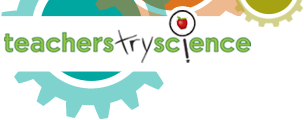Teacher set-up:
1. Each station will have 4 metal trays (except station 1, which will have 3). One each for fur, feathers, sand and water.
2. Coat fur and feathers with oil (should leave them soak at least overnight); place samples of each into trays. Four trays of each. Separate sand into four trays and add oil to top of sand.
3. Station 1: paper towels, tray of fur, tray of feathers and tray of sand. Station 2: sponges, tray of fur, tray of feathers, tray of sand and tray of plain water.
Station 3: sponges, tray of fur, tray of feathers, tray of sand and tray of salt water.
Station 4: sponges, tray of fur, tray of feathers, tray of sand and tray of soapy water.
With Students:
1. Discuss with students outcome of oil spills on environment. Review background information on animals and habitats damaged. Also include student discussion and ideas on clean up. Show students pictures of oil spill pollution and damage (depending on the age of your students, you may or may not want to include pictures of animals that have been hurt or killed).
How hard is it to get oil off of something?
What do you think will happen when we use just plain paper towels?
Do you think combining different materials will have a better outcome?
2. Students will break into groups (teacher’s discretion – I had them work in pairs). Explain to the students that they are now rescue workers; helping to clean up after an oil spill. Tell them they will be able to use any of the objects at the station to complete the task. The goal is to find which objects will clean the most oil out of the sample.
*How hard is it to get oil off of something?
*What do you think will happen when we use just plain paper towels?
*Do you think combining different materials will have a better outcome?
3. Each student will wear rubber gloves and safety goggles while performing this activity. Discuss the hazards of oil to our skin and body.
4. Students will rotate through each station and attempt to use the tools given to remove the oil from the various objects. Students can use objects separately or in conjunction. Students must keep track of what objects they are using and how they are using them.
5. After completing the task, students will regroup to discuss the outcome of the activity. What materials didn’t work? Which did? Which ones worked faster or more thoroughly? What was the purpose of using the salt water? What was the purpose of using the soapy water?


Comments
Mrs.H
Permalink
March 16, 2012 - 5:44pm
I think that overall this is
ksouffrant
brooklyn, New York, United States
Permalink
March 18, 2012 - 12:23am
Interesting lesson